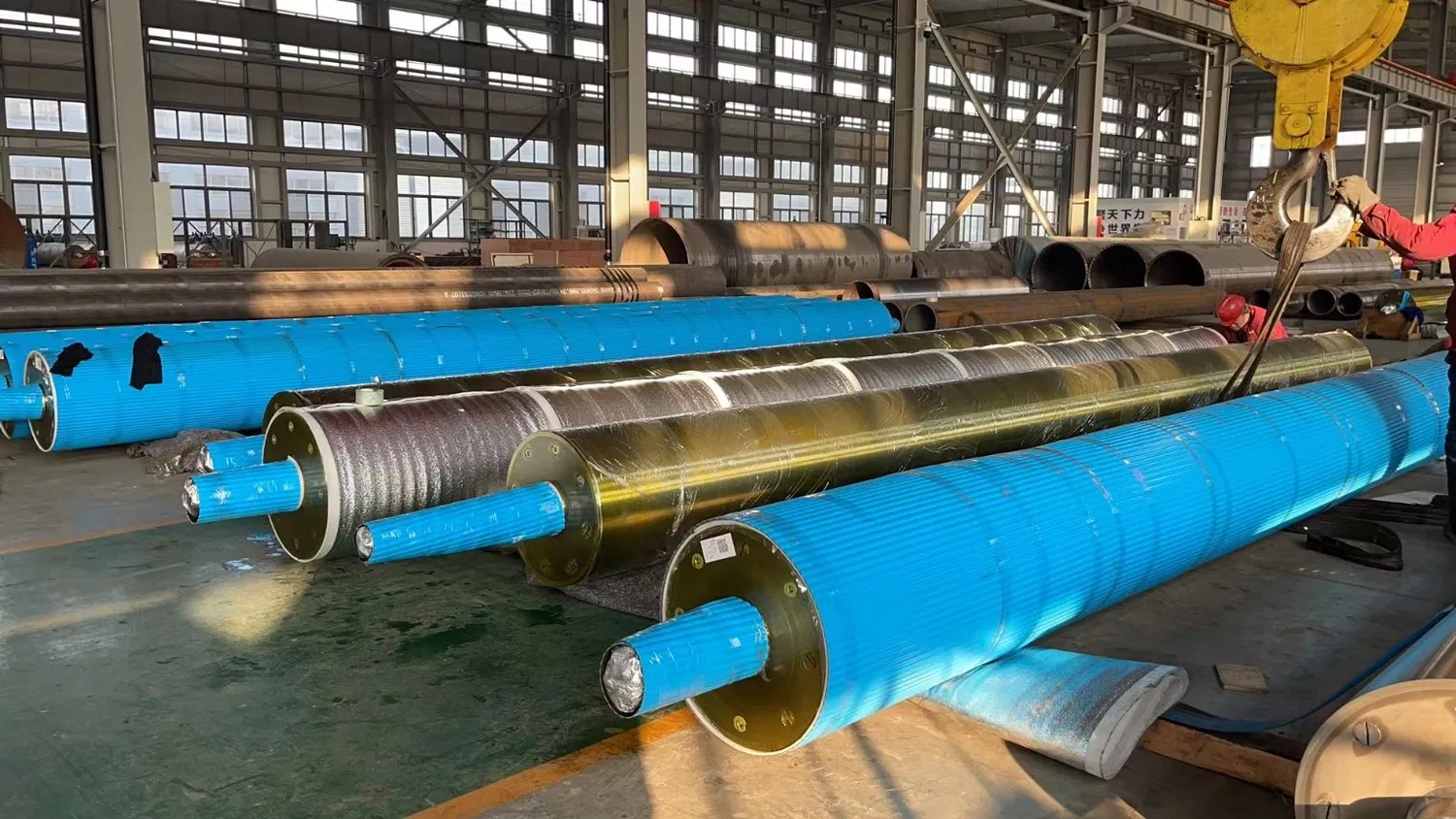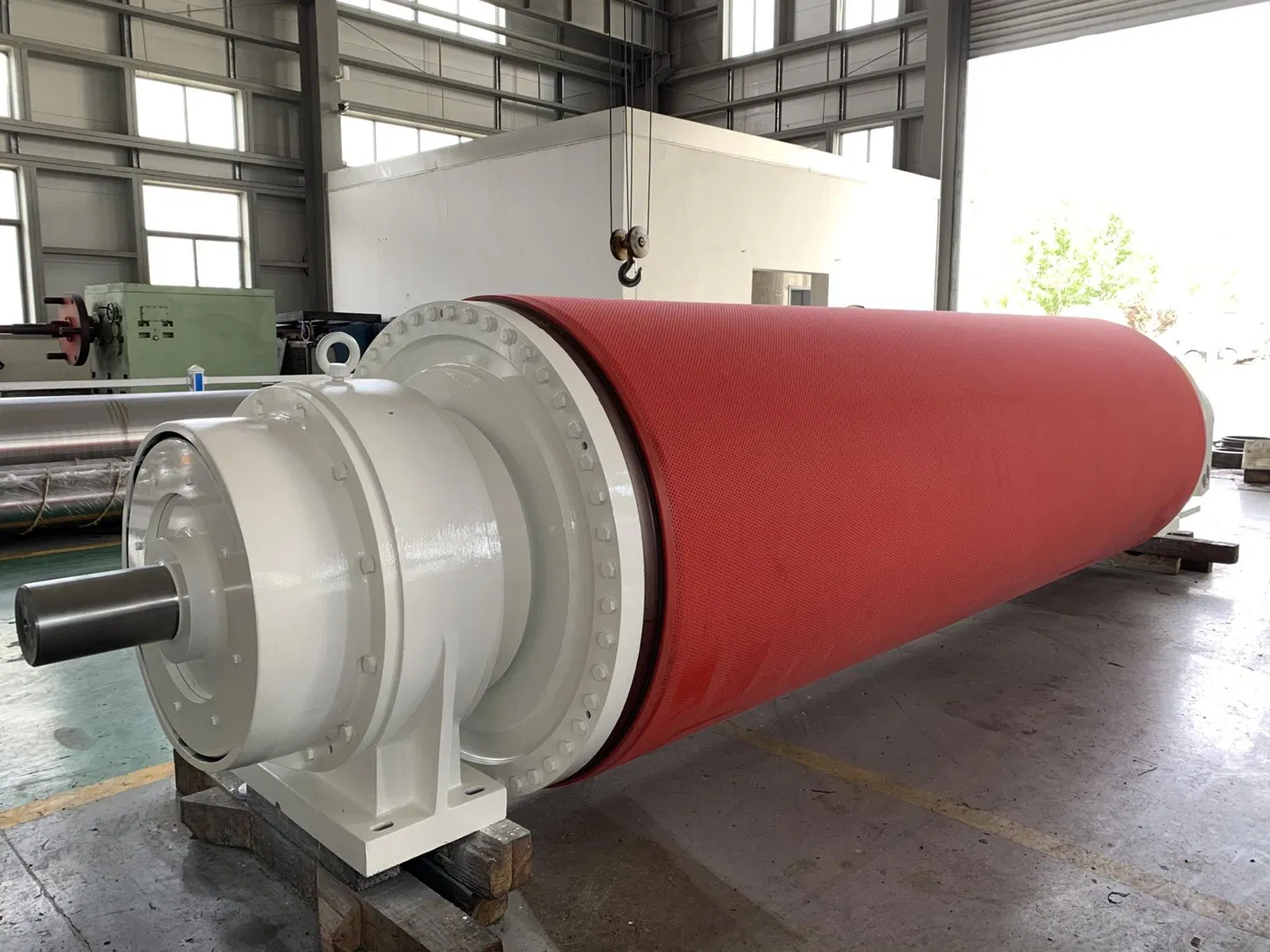The Enduring Legacy of Stone Rolls in the Press Section
Stone rolls, particularly those made from granite or other natural stone, represent the historical bedrock of the paper industry. For centuries, their inherent properties made them the undisputed champions of the press section. Their sheer mass and hardness were seen as advantages, providing the necessary nip pressure and stability for dewatering.Characteristics and Advantages of Traditional Stone Rolls
Stone rolls are characterized by their extreme hardness and rigidity. They offer excellent dimensional stability under varying temperatures and pressures, which was crucial in earlier paper machine designs. Interestingly enough, their natural porosity, while seemingly a drawback, could sometimes aid in water removal by allowing some absorption from the web within the nip, albeit limited. The primary advantages often cited for stone rolls include their exceptional durability and longevity under certain conditions. They are incredibly resistant to wear from abrasive fillers in the paper furnish, and their robust nature means they can withstand significant mechanical stresses. For mills operating older machines or producing specific, less demanding paper grades, the tried-and-true reliability of a stone roll often outweighed other considerations. Furthermore, the traditional feel and aesthetic of a stone roll can appeal to those who value historical methods and proven, albeit slower, operational paradigms.Limitations and Challenges of Stone Rolls
However, the very characteristics that once made stone rolls indispensable also present significant limitations in today's high-speed, high-efficiency paper production environment. Their immense weight necessitates heavy-duty machine frames and bearings, increasing capital expenditure and energy consumption for rotation. Maintaining a precise, uniform nip across the entire roll width can be challenging due to their rigidity; any slight deflection can lead to uneven dewatering and variations in moisture profile. Moreover, stone rolls are susceptible to chipping or cracking from impact, which can be costly and time-consuming to repair. Their surface properties are also less adaptable. Achieving optimal dewatering requires specific surface textures, and modifying a stone roll's surface for different paper grades or operational needs is far more complex and limited compared to modern materials. In my experience, while a stone roll might last a very long time, its performance envelope is often quite narrow when compared to what modern technology offers.
The Evolution: Composite and Rubber-Covered Rolls for Enhanced Performance
The limitations of stone rolls spurred innovation, leading to the development and widespread adoption of composite and rubber-covered rolls. These modern solutions leverage advanced material science to overcome the inherent drawbacks of natural stone, offering superior performance characteristics tailored to the demands of contemporary papermaking.Understanding Composite and Rubber-Covered Roll Technologies
Rubber-covered rolls have been around for a while, but their technology has evolved dramatically. These rolls typically consist of a metal core (often steel or cast iron) covered with a specialized rubber compound. The rubber can be engineered with varying degrees of hardness (measured in P&J or Shore D), elasticity, chemical resistance, and surface properties. This customizability is a game-changer, allowing for precise tuning of the nip profile and dewatering efficiency for different paper grades and machine speeds. Composite rolls, on the other hand, represent an even newer frontier. These rolls often utilize lightweight cores made from materials like carbon fiber or fiberglass, reinforced with resins, and then finished with a wear-resistant outer layer, which can also be a specialized polymer or rubber. The key advantage here is the combination of high strength-to-weight ratio, excellent stiffness, and often superior dynamic stability at high speeds.Key Advantages of Modern Roll Solutions
The benefits of composite and rubber-covered rolls are multifaceted and directly address the challenges posed by stone rolls: * Superior Dewatering Efficiency: The elasticity of rubber and composite covers allows for a more uniform and consistent nip pressure across the entire roll width, even with slight machine deflections. This leads to more efficient water removal, reducing the moisture content of the web entering the dryer section. A lower moisture content means significant energy savings in drying. * Enhanced Sheet Quality: A more uniform nip translates to a more consistent moisture profile, reducing caliper variations, two-sidedness, and other quality defects. This is crucial for producing high-quality paper and board. * Reduced Energy Consumption: Lighter weight composite rolls require less energy to rotate, contributing to overall energy efficiency. Moreover, the improved dewatering directly reduces the energy demand of the subsequent dryer section, which is typically the most energy-intensive part of the paper machine. * Extended Roll and Felt Life: The forgiving nature of elastic covers can reduce stress on the felts, extending their operational life. Furthermore, some modern covers are designed to be highly resistant to wear, chemicals, and heat, leading to longer roll service intervals. * Greater Customization and Adaptability: The ability to tailor cover hardness, surface texture (e.g., grooving, blind drilling), and chemical resistance allows mills to optimize roll performance for specific paper grades, machine speeds, and operational conditions. This adaptability is something stone rolls simply cannot offer. * Reduced Maintenance and Downtime: While modern rolls still require maintenance, their resistance to chipping and cracking, combined with easier regrinding and re-covering processes, can lead to less unscheduled downtime.Key Performance Metrics: A Comparative Analysis for Your Press Section
When it comes to choosing the best roll solution for your press section, a direct comparison across several critical performance metrics is essential. This isn't just about initial cost; it's about the total cost of ownership and the impact on your entire production line.Dewatering Efficiency and Energy Consumption
This is arguably the most significant differentiator. Stone rolls, due to their rigidity, can struggle to maintain optimal nip uniformity, especially on wider, faster machines. This often results in higher moisture content leaving the press. Composite and rubber-covered rolls, with their engineered elasticity and surface designs, can achieve significantly better dewatering. Many experts agree that even a 1-2% reduction in moisture content entering the dryer section can translate to millions of dollars in energy savings annually for a large mill. Can your operation afford to leave that much efficiency on the table?Sheet Quality and Runnability
The consistency of the nip directly impacts sheet quality. Uneven dewatering from rigid stone rolls can lead to moisture streaks, calender barring, and even sheet breaks. Modern elastic covers, by providing a more uniform pressure distribution, contribute to a more even moisture profile, improved sheet strength, and better overall runnability. This means fewer breaks, higher machine uptime, and a more consistent final product.Roll Life, Maintenance, and Capital Cost
While stone rolls are known for their inherent durability, their susceptibility to impact damage and the difficulty of surface modification can lead to costly repairs and limited adaptability. Composite and rubber-covered rolls, while requiring periodic regrinding and eventually re-covering, offer predictable maintenance cycles. The initial capital cost of a high-performance composite or rubber-covered roll might be higher than a reconditioned stone roll, but the long-term operational savings in energy, reduced downtime, and improved quality often provide a rapid return on investment. It's worth noting that the lighter weight of composite rolls can also reduce the wear and tear on machine bearings, extending the life of other critical components.
Choosing the Best Roll Solution: Factors to Consider for Your Press Section
The decision between stone and modern rolls is not one-size-fits-all. It requires a thorough evaluation of your specific operational context, production goals, and financial capabilities.Machine Speed and Paper Grade
For high-speed machines producing demanding paper grades (e.g., fine paper, coated board, tissue), composite and rubber-covered rolls are almost always the superior choice. Their ability to maintain precise nip control, handle high pressures, and offer customized surface properties is paramount for optimal dewatering and quality at speed. For slower machines or those producing less demanding, high-bulk grades, a well-maintained stone roll might still be adequate, though the efficiency gains of modern rolls are still compelling.Budget and Return on Investment
While the upfront cost of a new composite or high-performance rubber-covered roll can be substantial, it's crucial to look at the total cost of ownership. Factor in potential energy savings from improved dewatering, reduced sheet breaks, extended felt life, and lower maintenance frequency. In my experience, mills that invest in modern roll technology often see a payback period that is surprisingly short, driven by these operational efficiencies.Maintenance Capabilities and Future-Proofing
Consider your mill's maintenance capabilities. Do you have the expertise and equipment for handling modern roll materials? Many suppliers of composite and rubber-covered rolls offer comprehensive service and support. Furthermore, think about future-proofing your operations. As energy costs rise and quality demands intensify, upgrading to more efficient roll solutions can be a proactive step to ensure long-term competitiveness. Are you preparing your press section for the future, or are you holding onto the past? Ultimately, the choice of roll solution for your press section is a strategic one. While stone rolls hold a revered place in history, the advancements in material science and engineering embodied by composite and rubber-covered rolls offer compelling advantages in efficiency, quality, and cost-effectiveness for the modern paper mill. Evaluating your specific needs against the capabilities of each type of roll will guide you to the best decision for optimizing your press section's performance.For more detailed information, please visit our official website:Stone rolls
About the author: Dr. Evelyn Reed is a seasoned expert in paper machine technology with over two decades of experience specializing in press section optimization and roll materials. Holding a Ph.D. in Materials Science, her work focuses on enhancing dewatering efficiency, improving sheet quality, and reducing energy consumption in paper manufacturing. She frequently consults with leading mills worldwide on advanced roll solutions and operational best practices.


